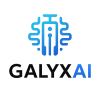Learning a new language has always been a challenge. From memorizing long vocabulary lists to practicing grammar rules, the process takes years of dedication. But in 2025, the rise of AI language learning tools is transforming the way students and young professionals approach language learning.
Unlike traditional apps, AI-powered language tutors adapt lessons to your pace, correct mistakes instantly, and provide real conversational practice. Imagine having a personal tutor available 24/7 — one that never gets tired of helping you pronounce tricky words or master grammar patterns.
In this blog, we’ll explore the 7 best AI language apps, compare their features, and share actionable strategies to help you learn a language with AI faster than ever. Along the way, we’ll also link you to other powerful AI productivity hacks like AI note-taking apps for students and AI book summarizer tools so you can build a complete study system.
Why AI Language Learning Tools Are Game-Changers in 2025
The biggest reason AI is revolutionizing language learning lies in personalization. Unlike static textbooks, AI for language learners adapts to your strengths and weaknesses.

- Adaptive learning paths: AI skips what you know and drills what you struggle with.
- Real-time feedback: Instant corrections make practice more efficient.
- Immersive conversation practice: With AI chatbots, you can simulate conversations anytime.
- Gamification: AI adds streaks, challenges, and quizzes to keep motivation high.
We’ve already seen how students use AI for faster research papers or even generate AI PowerPoint slides. Language learning is just another area where AI is eliminating wasted effort.
How to Choose the Best AI Language Apps
When selecting among the many AI language learning tools, look for these features:

- Adaptive repetition (like flashcards with spaced repetition)
- Pronunciation feedback (AI speech recognition)
- Role-play dialogues (simulating real-life conversations)
- Gamified micro-learning (short daily lessons)
- Cross-device sync (mobile, laptop, tablet access)
This is similar to how we compare AI quizzes for exam prep — the right AI tool should fit your study style, not the other way around.
7 Best AI Language Learning Tools (2025 Edition)
1. Duolingo with AI-Powered Features
Duolingo is already famous, but its 2025 update includes AI tutors like Lily for conversation practice.
- Strengths: Engaging, free, gamified.
- Drawbacks: Not great for advanced learners.
- Pro Tip: Pair with AI flashcard apps for deeper memorization.
2. Memrise AI Language Partner
Memrise integrates AI chat to simulate real-world conversations.
- Strengths: Combines structured lessons with chatbot interaction.
- Drawbacks: Some language coverage is limited.
- Pro Tip: Use AI-generated quizzes to reinforce words after each session.
3. ChatGPT as an AI-Powered Language Tutor
Tools like ChatGPT for homework can also act as AI-powered language tutors.
- Strengths: Flexible — explains grammar, creates quizzes, roleplays dialogue.
- Drawbacks: May occasionally provide errors or awkward translations.
- Pro Tip: Always ask ChatGPT to explain why your sentence was wrong, not just fix it.
4. Google Translate + Live AI Features
More than a dictionary, Google Translate now includes AI-powered live conversation mode.
- Strengths: Excellent for travelers.
- Drawbacks: Doesn’t provide structured lessons.
- Pro Tip: Treat every translation as a micro-lesson; log new phrases into AI note-taking apps.
5. TalkPal AI Conversational App
TalkPal focuses purely on free-flow conversation with AI.
- Strengths: Improves speaking confidence.
- Drawbacks: Weak on structured grammar.
- Pro Tip: Use TalkPal for speaking + AI-generated graphics for projects to visualize new vocab.
6. Langua (AI Language Tutor Platform)
Langua specializes in realistic AI dialogues for learners.
- Strengths: Highly immersive conversations.
- Drawbacks: Premium cost.
- Pro Tip: Use Langua + AI for assignments to practice writing + speaking together.
7. Custom AI Learning Stacks
Many learners combine tools: flashcards, summarizers, conversation bots.
- Example: Use AI book summarizers to translate books, AI PowerPoint slides to visualize grammar, and an AI tutor for practice.
- This DIY stack can be more powerful than any single app.
Benefits of Using AI for Language Learners
- Faster Progress with adaptive lessons
- Confidence Boost via 24/7 practice
- Affordable Access compared to human tutors
- Motivation through gamification
- Cross-skill learning (speaking, listening, reading, writing)
Drawbacks of AI Language Learning Tools
- May miss cultural nuance
- Sometimes inaccurate feedback
- Premium features cost extra
- Limited support for rare languages
- Risk of over-reliance on AI
Still, when balanced with human exposure, AI is unmatched for speed and consistency.
Strategies to Learn a Language with AI Faster
- Combine AI flashcards + daily conversation practice.
- Use AI quizzes weekly to test recall.
- Translate real-world media (YouTube, blogs) with AI.
- Keep an error journal in AI note-taking tools.
- Create AI-generated infographics to visualize grammar.
This layered approach mirrors how students use AI productivity apps to manage time.
FAQs
Q1. What is the best AI language app in 2025?
For beginners, Duolingo with AI. For conversation, Langua or TalkPal. For flexibility, ChatGPT.
Q2. Can AI tools make me fluent?
They can get you to intermediate fluency fast, but cultural nuance still needs human practice.
Q3. Are AI tutors safe for students?
Yes, but don’t share sensitive personal info. Stick to language practice.
Q4. How much time should I spend daily?
15–30 minutes daily with AI tools is enough to see measurable progress.
Q5. Are AI tools better than human tutors?
They’re cheaper and available anytime, but can’t fully replace native human interaction.
Conclusion
In 2025, AI language learning tools are the fastest way for students and professionals to gain new skills. Whether you’re using AI-powered language tutors like Langua, free apps like Duolingo, or custom stacks with AI book summarizers, you’ll save time, stay motivated, and achieve fluency faster.

Start today: pick one app, commit to 15 minutes a day, and track your progress for 30 days. The results will surprise you.
If you enjoyed reading this blog and want more daily AI tips and productivity hacks, follow me on Instagram @galyxai and X (Twitter). I regularly share practical strategies to help students and young professionals save time and get more done every day.

